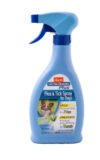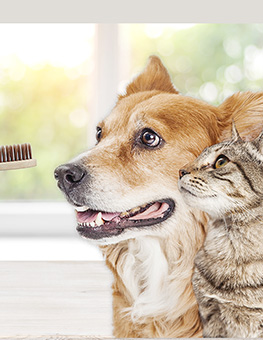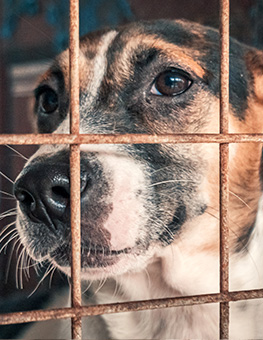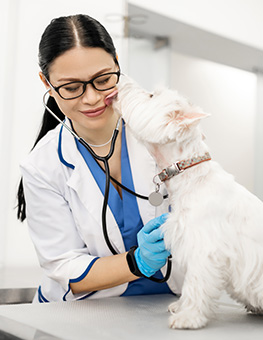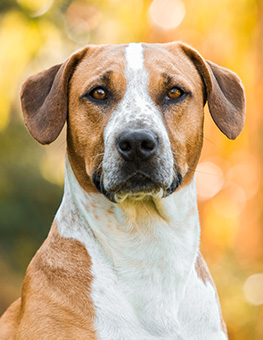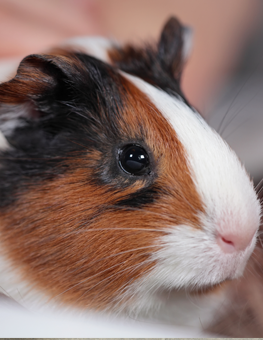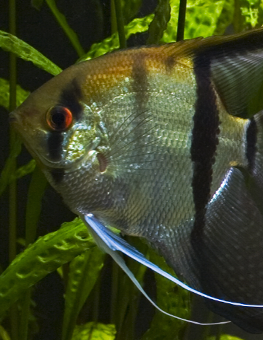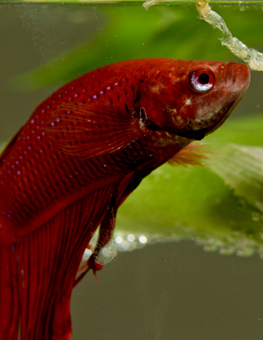Flea Control on Your Pet: How to Get Rid of Fleas on your Pet
An important step in flea control is dealing with the infestations themselves. Here’s how to get rid of fleas in your pet’s skin and hair.
To fully deal with a flea problem, it’s important to deal with both the environment (house, yard, etc.) and the infestation. Dealing with the infestation means treating your pet for the fleas that are living on his body.
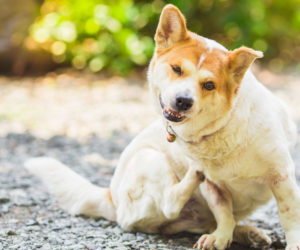

Dogs and cats with flea problems can develop many medical complications, including flea allergy dermatitis, an allergic reaction that causes hair loss and skin problems.
Why is it important to deal with fleas?
Not only is a flea infestation an unappealing concept, there are potentially negative and serious consequences for your animal. Dogs and cats with flea problems can develop many medical complications, including flea allergy dermatitis, an allergic reaction that causes hair loss and skin problems. Advanced flea infestations can also cause anemia from blood loss. Additionally, fleas carry diseases such as ehrlichiosis and Lyme disease.
It’s important to deal with flea issues quickly. The longer you wait, the more time the flea larvae have to grow up and create more fleas. Additionally, fleas can be spread to other animals and surfaces in your house and yard. Act quickly to prevent this.
How do you know your pet has fleas?
You may suspect your pet has fleas if he seems to be scratching himself much more than usual. If your pet’s skin has small red spots or his hair has black specks, these are signs of fleas. Also, you may be able to spot the fleas themselves in your pet’s coat.
How to get rid of fleas
Once you’ve determined that your pet has fleas, there are a few ways you can eliminate this problem, and a host of actions you can take to make sure fleas are never a problem again. If you are using these products for a cat, make sure that they do not contain permethrin. Here are some of the ways you can fight fleas:
- Flea Shampoo: These products work to kill the fleas already on your pet. To use them, you need to wash the shampoo over your pet’s whole body, leave the shampoo on for about ten minutes, then rinse. Shampoos are not very effective for flea prevention.
- Topical Solutions: These are the most common flea treatment, and are applied to the nape of your pet’s neck. They last fairly long, and some only need to be applied monthly.
-
Flea Spray: Sprays are applied to your pet’s entire coat, though not in great amounts. To apply around the eyes, use a cotton ball to dab the spray on, making sure not to get any in the eyes. Use as directed by the product and your veterinarian and remember to spray in a well-ventilated area.Hartz® UltraGuard Plus® Flea & Tick Spray for Dogs
- Flea Collars: These fit around your pet’s neck and provide flea protection for a certain duration. When fitting, make sure the collar is not too snug; two fingers should fit in between the skin and collar. Also make sure to cut off excess collar so it cannot be chewed on. In addition to permethrin, organophosphates and amitraz should not be present in cat flea collars.
- Oral Products: Some tablets exist that, when taken monthly, can prevent the development of young fleas into adults. Though you will still need to use something to kill the adult fleas, these products are effective in keeping the situation from worsening. Some are also available as twice yearly injections.
It is important to continuously evaluate your pet for flea control. Many products only kill the fleas, and those with residual effects don’t last forever. Treatment and prevention go hand in hand, and you should treat the environment as well as the animal.



